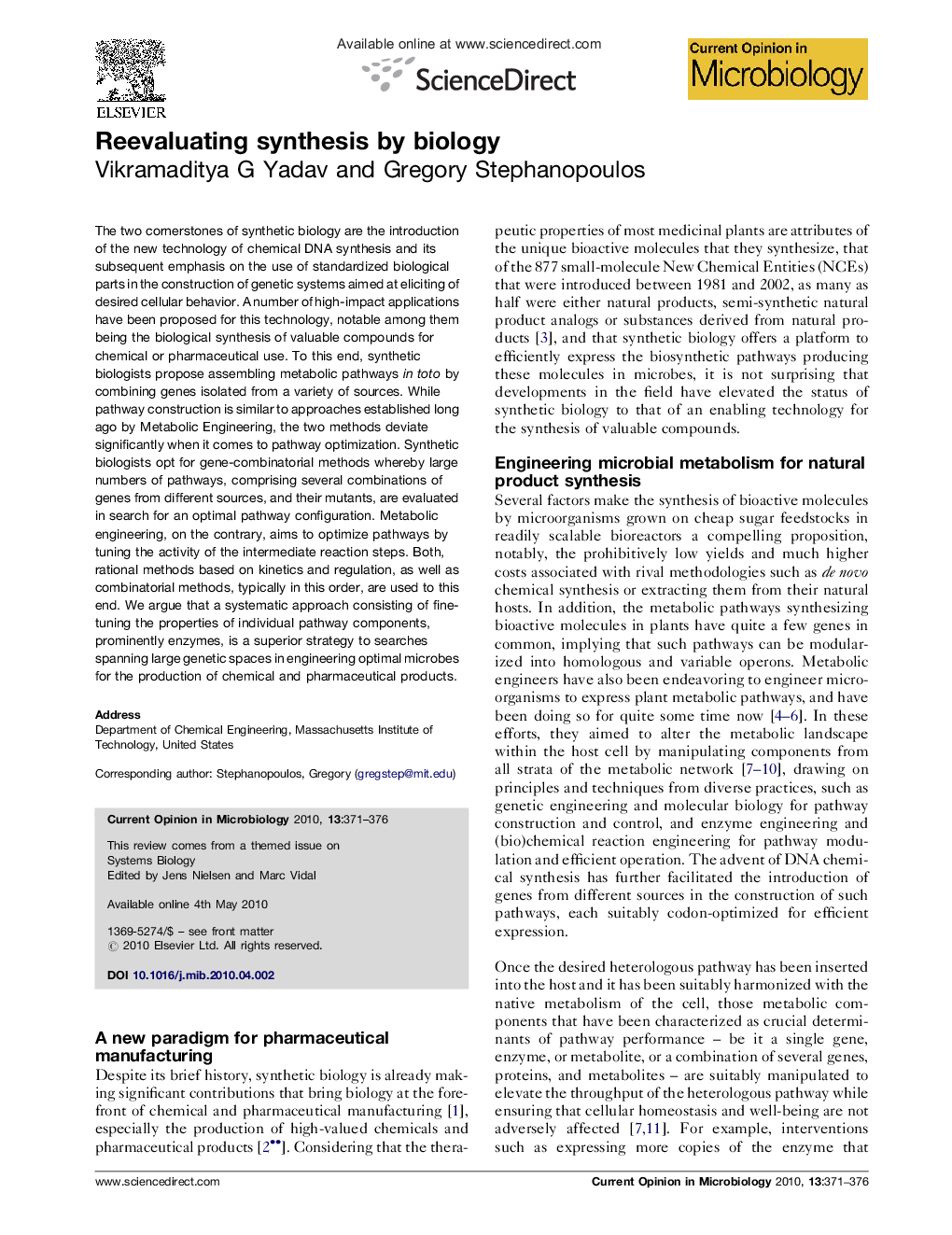| Article ID | Journal | Published Year | Pages | File Type |
|---|---|---|---|---|
| 3399176 | Current Opinion in Microbiology | 2010 | 6 Pages |
The two cornerstones of synthetic biology are the introduction of the new technology of chemical DNA synthesis and its subsequent emphasis on the use of standardized biological parts in the construction of genetic systems aimed at eliciting of desired cellular behavior. A number of high-impact applications have been proposed for this technology, notable among them being the biological synthesis of valuable compounds for chemical or pharmaceutical use. To this end, synthetic biologists propose assembling metabolic pathways in toto by combining genes isolated from a variety of sources. While pathway construction is similar to approaches established long ago by Metabolic Engineering, the two methods deviate significantly when it comes to pathway optimization. Synthetic biologists opt for gene-combinatorial methods whereby large numbers of pathways, comprising several combinations of genes from different sources, and their mutants, are evaluated in search for an optimal pathway configuration. Metabolic engineering, on the contrary, aims to optimize pathways by tuning the activity of the intermediate reaction steps. Both, rational methods based on kinetics and regulation, as well as combinatorial methods, typically in this order, are used to this end. We argue that a systematic approach consisting of fine-tuning the properties of individual pathway components, prominently enzymes, is a superior strategy to searches spanning large genetic spaces in engineering optimal microbes for the production of chemical and pharmaceutical products.
